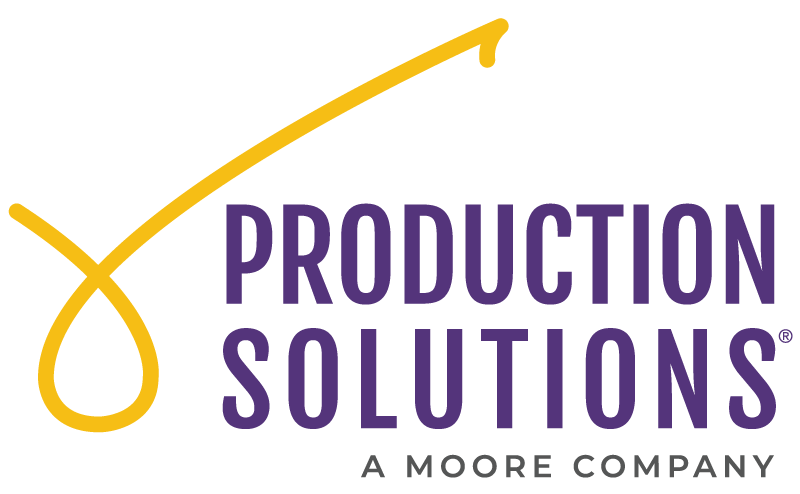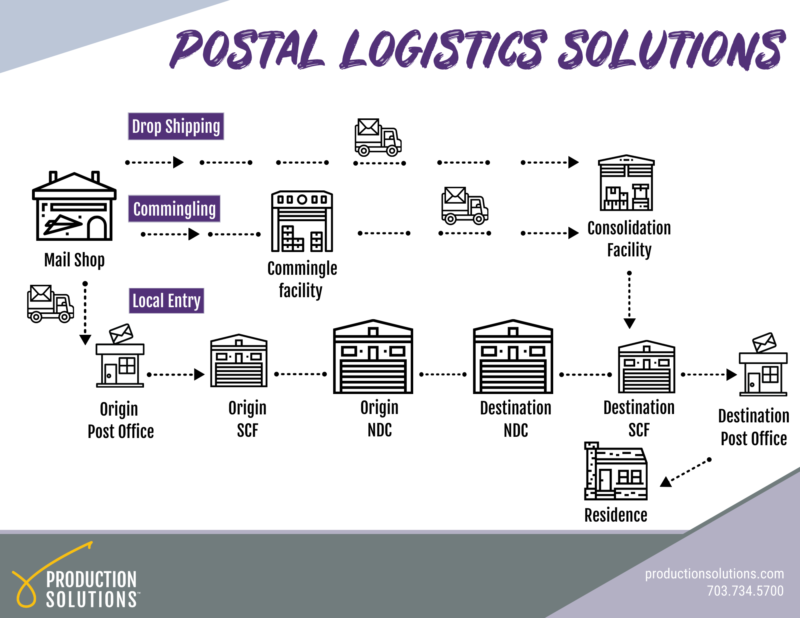How to Understand the New Postage Rates & USPS Details Explained

Shannon Sittler
Senior Sourcing ManagerEvery new year – and every new postage increase – PS releases a new postage rate chart! The next proposed USPS postage increase is scheduled to go into effect Sunday, August 29th, 2021. You can find our latest 2021 PS Postage Rate Chart here.
With these new postage rate changes coming soon, what better time to review the different types of postage options the USPS and Production Solutions have to offer?!
Let’s take a look at some of the terms you’ll see on the PS Postage Rate Chart and how they relate to you, and your mail!
Letters, Cards and Flats – OH MY!
Letters, Cards and Flats – OH MY!
The dimensions of your mailpiece will greatly impact your postage rate. Here are the three common mail categories you need to know!
Letters: This category encompasses all of your envelope’s mail pieces that are a minimum of 5” long, 3.5” tall and 0.007” thick and a maximum of 11.5” long, 6.125” tall, and 0.25” thick.
Cards: This category covers all of your postcard mail pieces. The dimension requirements of a card are a minimum of 5” long, 3.5” tall and 0.007” thick and a maximum of 6” long, 4.25” high and 0.016” thick.
Flats: This category encompasses all of your envelope mail pieces that exceed at least one of the maximum dimensions of a letter – more than 11.5” long, 6.125” high or 0.25” thick, while not exceeding the maximum dimensions of 15” long, 12” tall and 0.75” thick.
First Class!
First Class Postage, while pricier than our other postage options, comes with perks! It boasts the quickest delivery time and it includes forwarding and return services at no extra cost. There is no minimum quantity to mail First Class at Retail Single-Piece prices.
If your mailing is 500 or more pieces, you have the option to Presort your mail for a lower rate, while maintaining all the advantages of First Class Postage. If you Presort your mail, this means it will be grouped by your mailings’ addresses by zip code, it must be processed through the NCOA (National Change of Address) System, and it must be CASS (Coding Accuracy Support System) certified. This makes it easier for the USPS to process the mail pieces through the mail stream.
There are some items that are required to mail First Class based on the contents of your mail – bills, invoices, credit cards, handwritten notes, etc. are required to mail First Class.
Interested in a more economical option for your bulk mail, that doesn’t fall under the above specifications? Look no further than…
Marketing Mail!
Marketing Mail encompasses all mail that is not required to be mailed First Class or Periodicals. It is the most commonly used mailing class for direct mail bulk mailings due to the low postage rate. Marketing Mail has a longer delivery time than First Class and does not include forwarding and return services (unless special address services are added to your mailing). The minimum quantity to mail Marketing Mail is 200 pieces.
All Marketing Mail is required to be presorted, processed through the NCOA System, and certified by CASS. There are two types of Marketing Mail – Nonprofit and Commercial.
Any business or organization that does not have Nonprofit Authorization by the USPS can send their mail using Marketing Mail – Commercial rates. Any Nonprofit Organization with written authorization by the USPS can send their mail using Marketing Mail – Nonprofit postage – which provides even FURTHER cost savings than the already economical Marketing Mail rate!
Presort – Local Entry!
As for the rates you’ll see on our PS Postage Rate Chart – these rates are all for Local Entry mail. Local Entry mail is physically dropped off at the nearest USPS post office on a mailing’s mail date, to be distributed through the mail stream, and eventually reach the homes of your donors:
The rates for Presorted Local Entry mail are determined by the density and geography of where your mail is set to be distributed. Within a single mailing, you will have records that fall into several different tiers based on how close the mail is to its end location, and how high the saturation is in a particular geographic location.
Entry Points!

DNDC: Mail dropped off at the correct Destination Network Distribution Center that is addressed for delivery within that facility’s service area. There are 29 NDCs in the USPS Network.
DSCF: Mail dropped off at the correct Destination Sectional Distribution Center that is addressed for delivery within that facility’s service area. There are 350 SCFs in the USPS Network. Mail entering the stream here have the shortest journey ahead of them to get to their destination, and it costs the least in postage relative to the other two entry points.
Tiers!
After the entry point is determined, we move on to how high the saturation of your mail is in a particular geographic area. The more pieces going to the same particular geographic areas, the more cost savings.
5-Digit: To qualify, at least 150 pieces need to be going to the same 5-digit zip code.
3-Digit: To qualify, at least 150 pieces starting with the same 3-digits of the zip code associated with a Sectional Distribution Center.
AADC: To qualify, at least 150 pieces starting with the same 3-digits of the zip code associated with a corresponding Network Distribution Center.
Mixed AADC: The remaining balance that doesn’t fit into the 3 levels above.
Have more questions about how to read the new PS Postage Rate Chart? Your Production Solutions team is here to answer any questions you may have and to work with you to find the best postage handling for your mailing!
About the Author

Shannon Sittler
Senior Sourcing ManagerShannon, a reliable and organized Senior Sourcing Manager, has been serving with PS since 2018. Shannon has over six years of experience in the industry, previously working as a Production Manager at a political and nonprofit direct marketing agency, and as a Senior Production Specialist at an automotive marketing agency. Shannon practices patience, and her unique ability is mastering excel spreadsheets for cost comparison, scheduling her week, and anything to make her team and clients’ jobs easier. To Shannon, impeccable customer service experiences consist of open communication with our supplier partners and clients. Shannon is passionate about her occupation of ultimately serving nonprofit organizations because she values focusing on restoring and retaining our country’s history and historic places. One of Shannon’s strongest suits is communicating authentically – she believes that the best way to serve our clients is through transparent communication and honesty.
Shannon lives in Sterling, Virginia with her husband, daughter, dog, and is particularly interested in science fiction, 60s music and cooking! She enjoys spending her free time reading, watching movies and baking.






